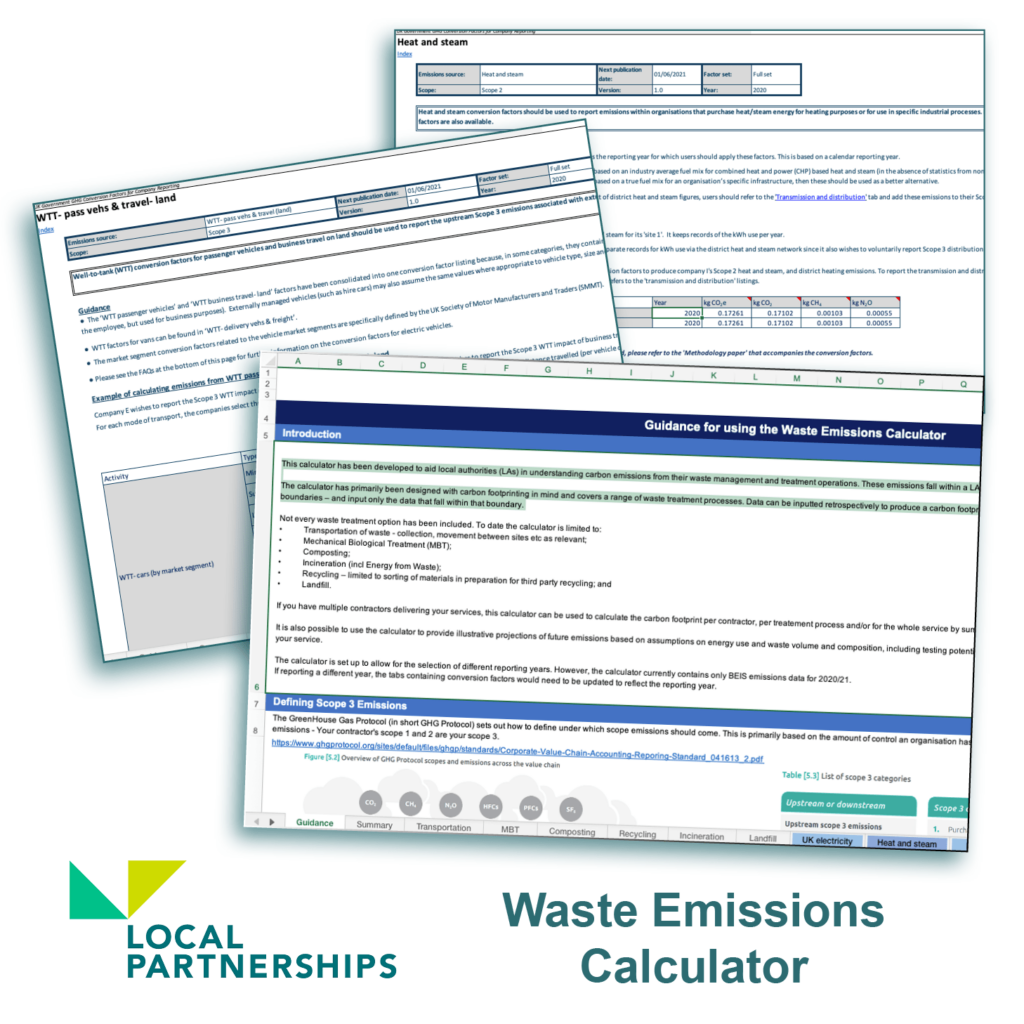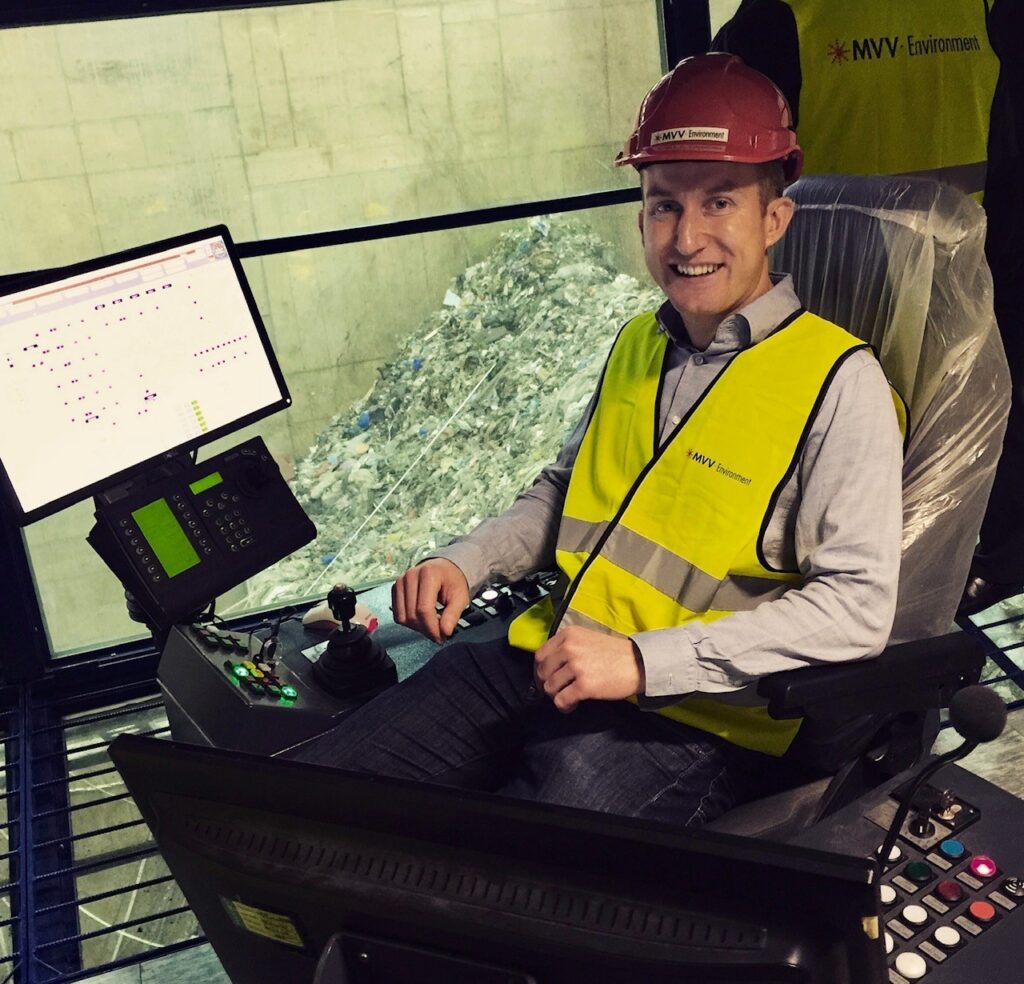A first version of the calculator was developed in 2021, specific to Cambridgeshire county council waste operations. Then in 2022 the calculator was road-tested with six other local authorities and expanded to include energy from waste with help from Worcestershire county council and its suppliers.

It means that local authority officers, from climate change teams through to waste departments, can now work out the impact of waste operations such as from vehicle use or waste treatment via energy from waste.
Local Partnerships
Huw Russell from Local Partnerships, who is a lawyer by trade, explains that the waste emissions calculator fits well within the services provided by Local Partnerships, which includes support for the Waste Infrastructure Delivery Programme at Defra.
A precursor to the waste calculator, notes Mr Russell, was the production of a greenhouse gas accounting tool, which as with the waste emissions calculator, was funded by the Local Government Association (LGA). The greenhouse gas tool was developed around four years ago and has a relatively basic option for waste calculations and is used by a lot of local authorities.
The calculator we have co-developed with Cambridgeshire county council helps improved accounting and reporting of emissions from local waste management
The success of the greenhouse gas tool was a factor in the LGA’s decision to provide funding under the Net Zero Collaboration Programme, between the LGA and UCL, for the waste emissions calculator. This saw from 2021 onwards the coming together of UCL and Cambridgeshire county council. Emily Bolton, climate crisis strategy manager, at Cambridgeshire and Dr Isabella Butnar of the UCL Institute for Sustainable Resources worked on the development of the calculator.
‘Improved accounting’
Dr Butnar says: “There is a genuine interest at local authority level to understand and reduce their scope 3 emissions. The calculator we have co-developed with Cambridgeshire county council helps improved accounting and reporting of emissions from local waste management. It also offers a harmonised understanding of sources of emissions, fostering constructive discussions within the council and between the council and their waste suppliers towards reducing supply chain emissions.”
At Local Partnerships, Mr Russell says the organisation thought the latest calculator a good addition to the GHG accounting tool. “We have regularly held webinars and talks with councils and they have said they would like to do a bit more on the waste side.”

He continues: “We looked at the idea of the emissions calculator, had various meeting to see how could help and also looked at what was available in the market and to colleagues at WIDP.”
And, he explains that it was recognised that there were other products in the market such as the WRATE waste analysis tool offered by Golder Associates, at a cost to councils. There was also an alternative free tool released by consultancy Tolvik at the start of 2023, which focuses on EfW.
Conversations
Robust conversations were held internally about adding something new, something different, says Mr Russell. “Ours is a free calculator that is a good addition on the journey of accounting for emissions. This is very difficult challenge that we have got to do, to reduce our emissions and account for them, and with the calculator we can help the councils to do this.
“Our calculator is not as detailed as the WRATE tool and if a council is looking at investing in some new infrastructure, building a plant, or looking at options for EfW capacity it might choose WRATE.”
In the round
He outlines the likely users of the software: “The greenhouse gas tool is pitched at council climate change officers and other officers looking at emissions in the round. The waste emissions calculator is pitched at those emissions officers looking at waste in the round and for those waste contract officers interested in finding out where their emissions are coming from. Hopefully then they can work with their waste contractors in completing it as we don’t expect the councils to do all the work themselves. We think it is a good step for them to take.”
Feedback
January 2023 saw the release of the first edition of the calculator and further updates are likely with potential funding from the LGA. Mr Russell encourages feedback from councils over what they like, don’t like and how they would like to see the calculator developed to the following email address: ghgaccounting@localpartnerships.gov.uk .
He explains that there is no legal requirement on councils to account for emissions but the waste emissions works fits in with climate emergencies that many have declared, and with local authority trajectories to net zero. “Waste emissions are part of Scope 3 emissions under the GHG Protocol, and emissions linked to the collection, disposal and treatment of waste can be 30-40% of a council’s total emissions” he points out.
‘Scope’ definitions
Mr Russell details this: “Scope 1, for example could be for fuel directly used for RCVs which are council owned, by a provider this would be Scope 3. On our existing greenhouse gas tool we have split it into Scope 1, Scope 2 (indirect emissions, basically electricity that you purchase and use) and Scope 3 provider emissions and some council emissions. This gets quite complicated.”
As to whether calculating waste emissions will be a legal duty one day, he considers that the government is always looking at ways to tackle the climate emergency and to encourage councils to do more: “So I would think at some stage that it would be made a legal requirement”.
Once a local authority has used the calculator, it will enable them to look at the waste they are collecting, disposing, treating etc and in a fairly straightforward manner calculate the emissions that are flowing from that so they can identify the emissions they are responsible for, Mr Russell notes. “The calculator can be followed up with campaigns and actions involving residents and contractors. Residents can be told what emissions they are responsible for and so then councils can start targeting a reductions in emissions, as well as looking at the contractors to say that ‘we want to reduce emissions’.”
Contracts
Could the waste emissions calculator be part of a contract? Mr Russell responds: “It is not likely to directly be in a contract but a council could certainly say that we have identified the emissions that are associated with the service that you are providing and we would like to discuss how we can reduce those. Of course, there will have to be informed conversations for the contractor might say ‘ok, great,’ but you have contracted us to do this or that.”
In terms of local authority comparisons, Mr Russell says: “We do encourage councils to submit their completed forms to us and the LGA has a benchmarking exercise, LG Inform, and the waste emissions data will be included in that. This will allow councils will to see how others are doing and to share best practice.”
For Local Partnerships, he says that provision of the calculator is another aspect of its work which reaches across local authorities. On the waste climate front, he says that the organisation is keeping busy working on a range of projects including for Defra and the Welsh Government.
Useful links
For local authorities to download the Waste Emissions Calculator, click HERE and scroll down the page.
Click the link for details of the: LGA Net Zero innovation programme









Subscribe for free